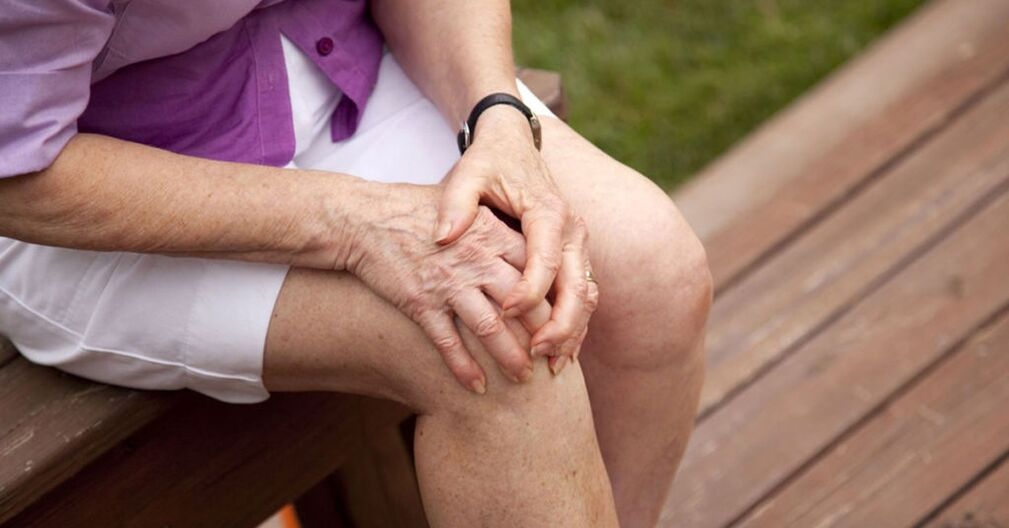
Joint pain isn't just a problem for the older generation. Young people are often faced with this. In some situations, pain relievers are saved from unpleasant symptoms, in others drug treatment is required, and in the most difficult cases the help of a surgeon is required.
Causes of Joint Pain
The causes of joint pain can be both mechanical and infectious. After an injury, no one is surprised by the pain when moving. However, when there is pain for no apparent reason, the patient does not understand how to act to get rid of the problem.
However, bacterial infection can cause pain. When pathogens enter the synovial fluid, they invade nearby soft tissues. Infection can get into a joint in a number of ways:
- As a result of prosthetics, due to poor quality sterilization of materials.
- Due to deep tissue damage in skin infections;
- After any surgical intervention performed in violation of the rules of antiseptic processing.
In addition to bacteria, the joint is also threatened by fungi. These microorganisms also enter the synovial fluid as a result of infection during surgery.
Few people associate stomach upset or bladder damage with knee or elbow pain. Nevertheless there is a connection. When the gastrointestinal tract is affected by a bacterial infection, toxins and colonies of microorganisms enter the bloodstream and travel with the bloodstream around the body. Some of them are deposited in the joint cavity. Common risks are:
- Diseases of the gastrointestinal tract;
- lesions of the urinary system;
- Venereal diseases;
- Rubella;
- Angina;
- Infectious mononucleosis;
- Lung infection.
This suggests that improper treatment of infectious diseases can have more serious consequences than anyone can imagine. For example, a late-diagnosed strep throat or a patient's refusal to prescribe prescribed antibiotics can lead to disability. This is because streptococci, which cause angina, are recognized by the immune system in the same way as cells from heart valves and intra-articular tissue. If antibiotic therapy is not used as the main treatment, the immune system itself destroys the joint tissues and fights the infection.
Viral infections also affect the joints. These are diseases like:
- Rubella;
- Hepatitis C;
- Hepatitis B;
- Herpes.
Mankind has not yet invented a proven drug to fight viruses. The only exception is the drug acyclovir, which is effective against the herpes virus. Other diseases of viral etiology can only be defeated by human immunity. To protect yourself from infections that can destroy joint tissues, vaccinations can help boost your immunity. Vaccinations against rubella and hepatitis are included in the compulsory calendar.
How to Relieve Pain
As a symptomatic treatment for joint pain, orthopedic surgeons practice non-steroidal anti-inflammatory drugs.
If the pain is unbearable, you need to see a specialist who will block it. This is a procedure that allows you to introduce anesthesia into the joint itself and into the zone of the nerve endings near the root. But this solution to the problem is temporary. After 10-16 hours, the patient's condition returns to its original position.
What does the crunch in the joints say?
The crunch of the joints can have several causes. On the one hand, the crunch indicates that the intra-articular substrate is exhausted as a result of a violation of the water-salt balance. On the other hand, the one-time crunch that can be heard when the joint is bent or stretched to its extreme position is the sound of gas bubbles bursting in the synovial fluid.
If there is a constant crunch during movement, then you need to reduce the load on the moving part. It is better to get rid of the cause through the practice of an orthopedic traumatologist. Taking the advertised medication alone not only does not help, but can also be harmful. X-rays show the condition of the bones and inter-articular cartilage. If it turns out that he is exhausted, individual recommendations are given. If, with the developed cartilage, you independently clog the pain with nonsteroidal anti-inflammatory drugs, then the sensitivity in the joint can only be reduced and continue to be exploited. Over time, thin cartilage becomes the cause of inflammation of intra-articular tissues, which leads to osteoarthritis.
Arthritis or osteoarthritis
For those who have no medical training or have not personally had problems with bones and joints, two concepts seem to be exactly alike: arthritis and osteoarthritis. The similarity of the names is explained by the fact that all diseases associated with joints have the root "art". The suffix "it" speaks of an inflammatory process. This can be seen in other words: rhinitis - inflammation of the sinuses, bronchitis - inflammation of the bronchi; otitis media - an inflammation of the ear. At the same time, the term does not talk about the causes of inflammation, canSo it is not a diagnosis. Bronchitis, for example, can be both viral and bacterial. This means that treatment tactics are completely different in both cases. Arthritis is inflammation of the joints with no description of the cause.
Osteoarthritis is a condition that affects the inter-articular cartilage. Long-term unexplored arthritis sooner or later leads to osteoarthritis. Inflammatory processes in the joint disrupt the metabolism, as a result of which the tissue is not properly nourished and becomes thinner. This leads to the destruction of cartilage tissue.
Joint disease prevention
Proper nutrition ensures the health of all body systems. Adequate amounts of protein, calcium, iron, and vitamins will allow you to provide everything you need for cartilage tissue, ligaments, synovial fluid, and bones.
In addition, an active lifestyle keeps muscles in shape, which gives them extra support for the entire skeleton in general and the joints in particular. And in order to protect yourself from dangerous viral infections that affect the joints, you need to be vaccinated in a timely manner.














































